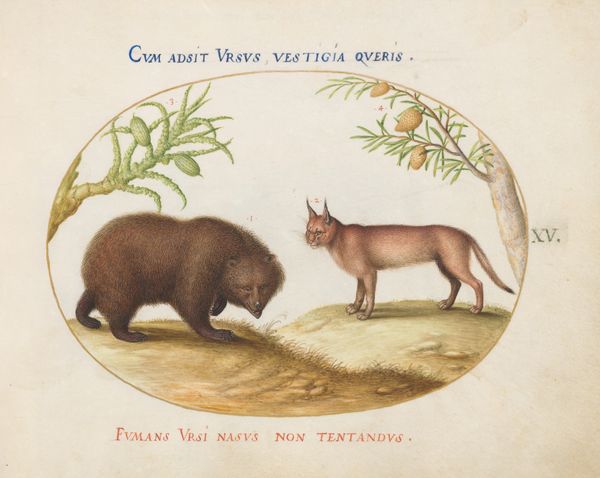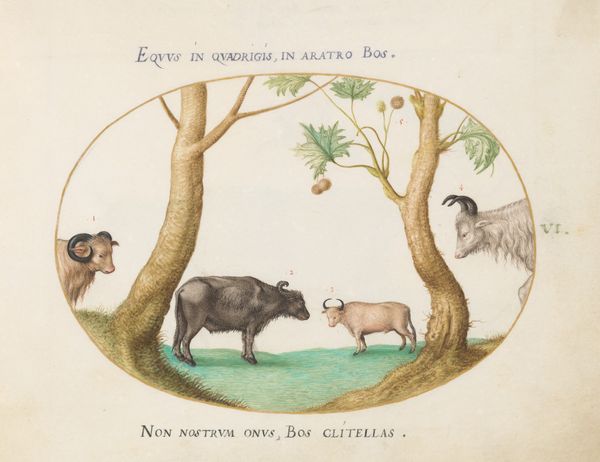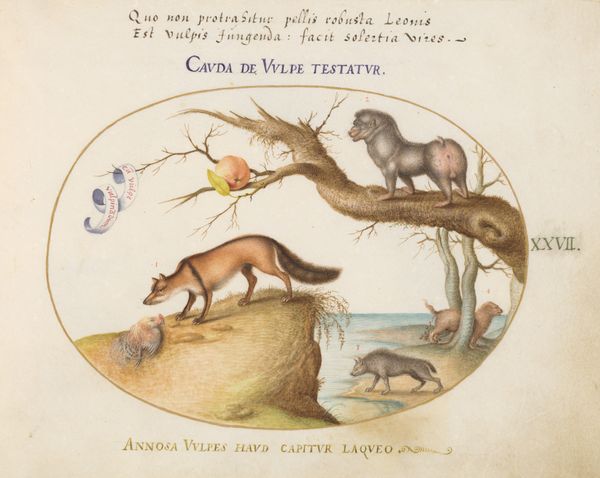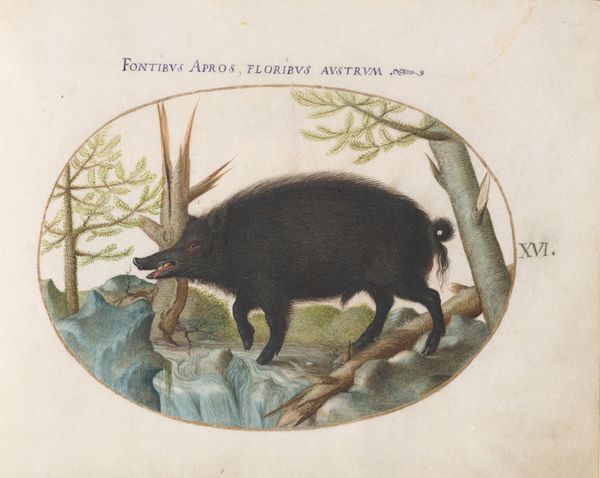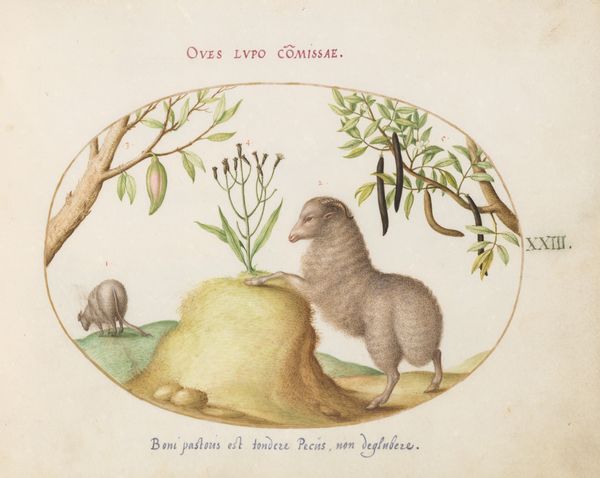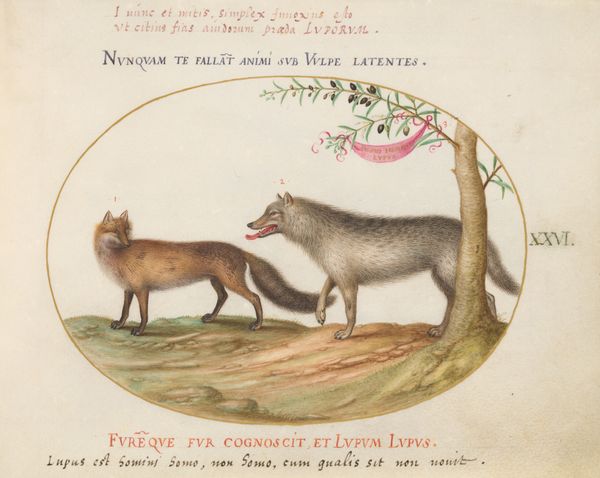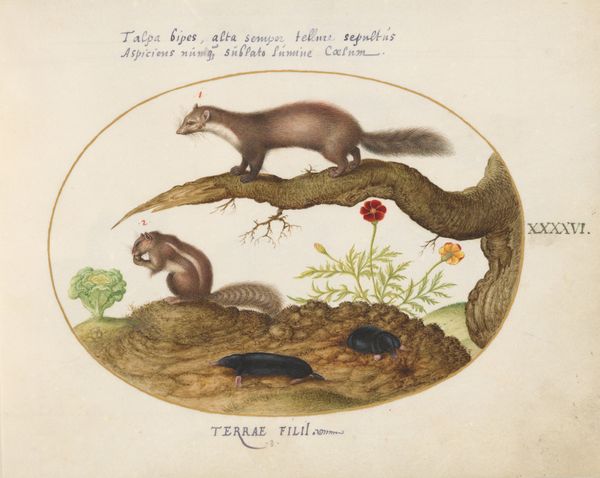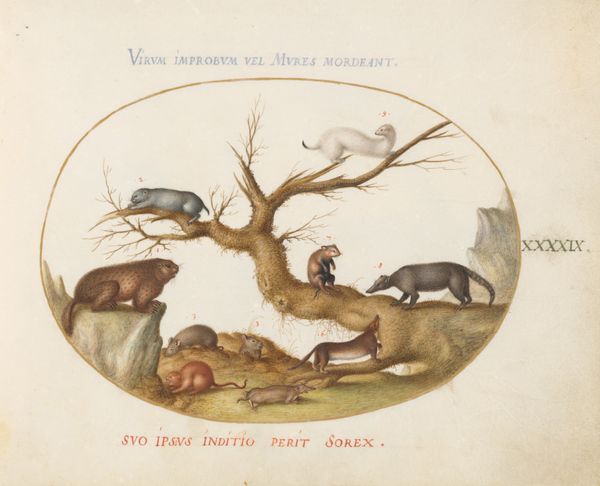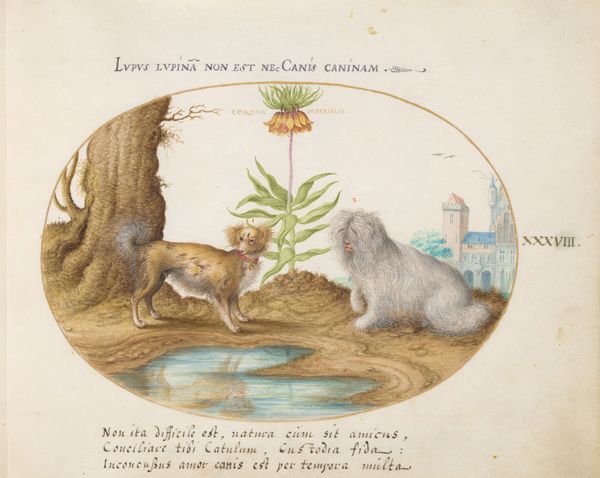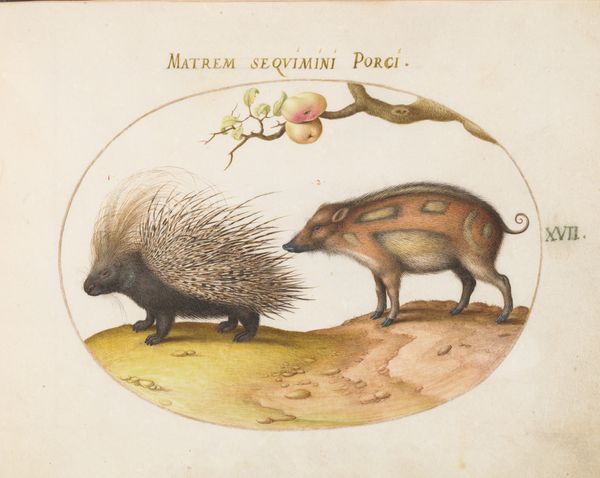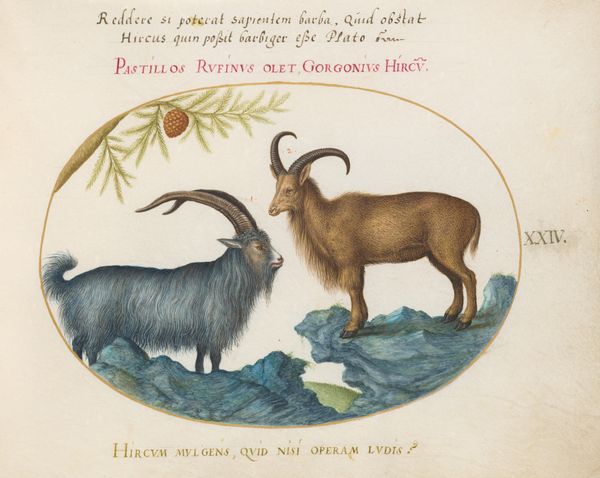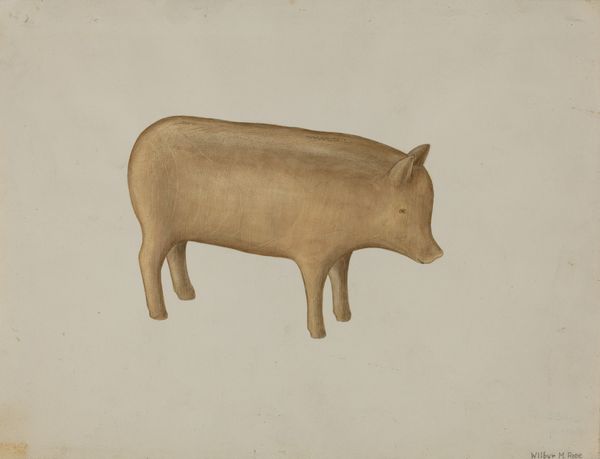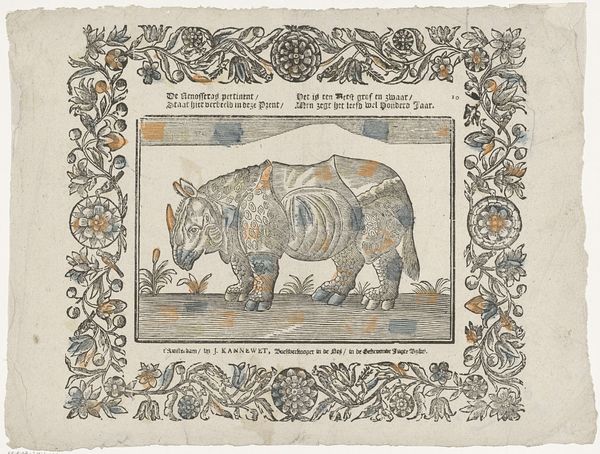
drawing
#
drawing
#
aged paper
#
toned paper
#
light pencil work
#
pencil sketch
#
coloured pencil
#
coffee painting
#
watercolour bleed
#
watercolour illustration
#
watercolor
#
warm toned green
Dimensions: page size (approximate): 14.3 x 18.4 cm (5 5/8 x 7 1/4 in.)
Copyright: National Gallery of Art: CC0 1.0
Curator: What a fascinating little pig! There's something almost melancholic about its gaze. Editor: Indeed. What we're observing is a drawing by Joris Hoefnagel, titled "Plate 18: A Pig with Acorns," dating from around 1575 to 1580. Hoefnagel was part of a cultural milieu where naturalism was intertwined with deeper social and symbolic meanings. Curator: I can see that, particularly when considering what the pig symbolized historically. Gluttony, perhaps, but also abundance. Placed in its social context, do you think it’s making some sort of political comment? It feels incredibly grounded in a specific cultural moment. Editor: That’s insightful. The pig was certainly a multivalent symbol, reflecting anxieties about excess and luxury during a time of immense social upheaval. Often, such depictions implicitly criticized those who profited from these excesses, questioning prevailing power dynamics. Think about the historical implications for class. Curator: Absolutely! And the fact it's rendered with such detail in watercolour…it is a strangely sympathetic portrait despite any potential negative connotations. How was the artistic choice itself shaped by the society it occupied? Editor: Good point. Watercolour, at that time, lent itself well to scientific illustration alongside artistic expression. Hoefnagel walked a tightrope: the delicate medium captured natural details while embedding his subject in complex symbolic and political frameworks. Curator: It almost humanizes it; but is that just our projecting a modern sensibility? In what other ways were people of the 16th century shaped by art and visual culture differently than we are today? Editor: The accessibility and purpose of art was distinct. For many, imagery provided a lens through which social commentary was viewed and comprehended. "Plate 18," like many pieces from this era, straddles the line between objective observation and social critique. Curator: This image, like much of his natural history studies, is part of this incredible history and these incredible dialogues. Editor: Exactly, Hoefnagel’s "Pig" presents a perfect opportunity to reflect on the intricate dance between art, politics, and historical representation.
Comments
No comments
Be the first to comment and join the conversation on the ultimate creative platform.
